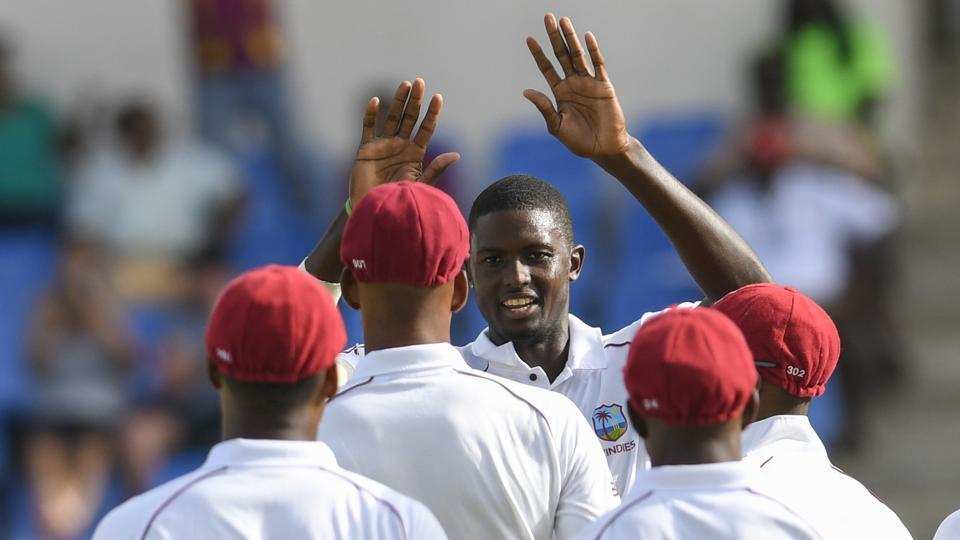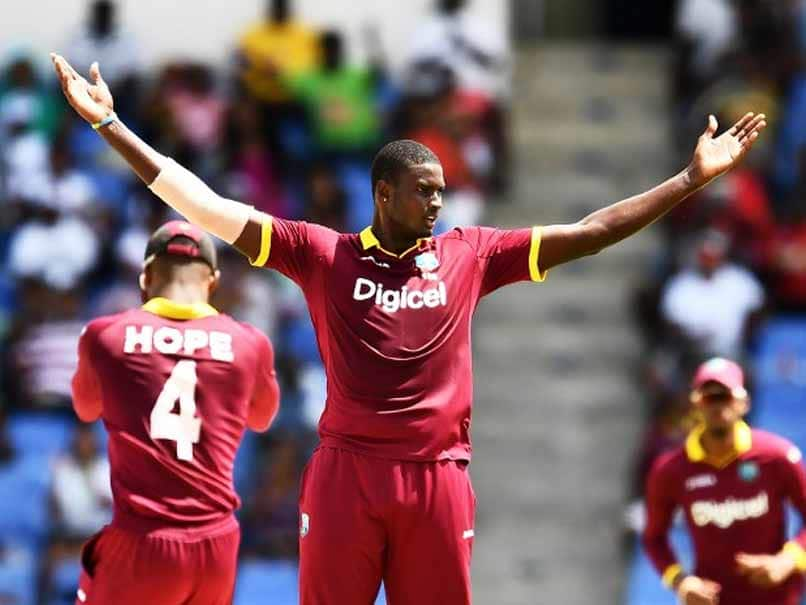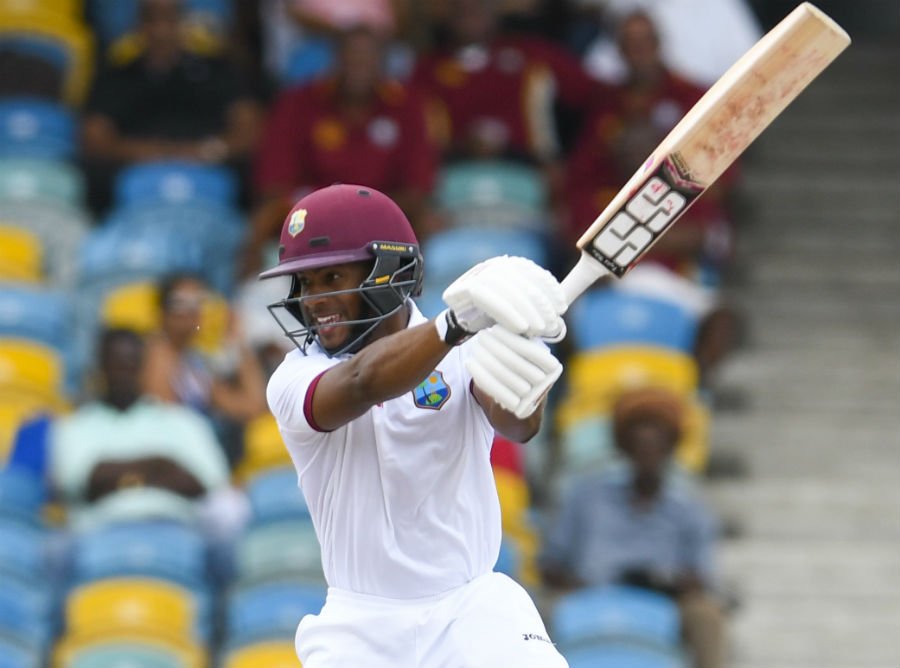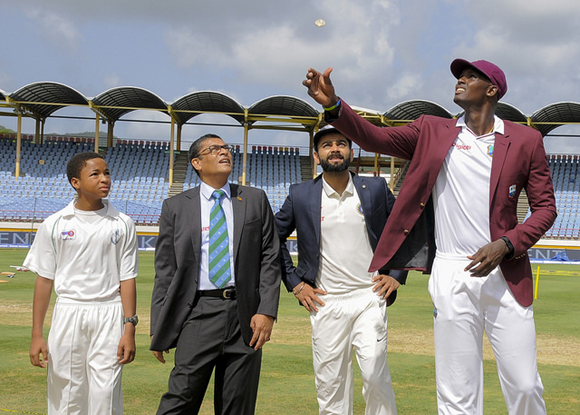In relation to the West Indies vs India contest, will it be wrong to say that every series needn’t be won; each contest needn’t be aced by precision and passion. And that, certain contests, at times, are meant to examine one’s individual strength, as an attempt to access the cricketer lurking beyond the jersey covered by layers of veins and muscles?
If you are India- you see only end to the series. That is to win. Nothing else would do.
If Kohli’s men draw a contest, it means, they played bad and nowhere near to their strengths; a collective outpouring of which stems from Pujara’s concentration, Rahane spending time on the crease, a strong middle order performance led by Virat himself, the spinners making a mockery of an attack, with the pacers waning down batsmen.
But if you are West Indies- you see a great relief with the mere prospect of a draw.
If you are Jason Holder, you return back to Barbados as a hero having drawn 1 Test in case of losing the other. Imagine the confidence that shall serve? You drew a Test in India. That means you prevented the ICC’s Test topping team from prevailing utterly.
Holder will hope that happens.
Let’s be honest. Is that really unachievable; are the West Indies daft to even hope for exhibiting an all-round show against India?
Here’s a question.
How strong was that side of May 2003 that eloped with a heist of sorts: in chasing 418 against Australia?
Was that a world-beating team? Weren’t the Aussies about as strong as India today? But well, that watershed moment in Test history occurred 15 years ago.
None of those chasemasters- Brian Lara, Shivnarine Chanderpaul, Ram Naresh Sarwan- are around.
In reality, for the West Indies to merely challenge India, 5 of their 11 in the ranks will have to produce an A-game. Not an impossible task again, but unrealistic in its outcome given in last half a decade, the West Indies have travelled twice to the sub-continent; once to Sri Lanka and Pakistan each, not India.
This leaves a question.
West Indies vs. India: how good has the captain been?

Jason Holder hadn’t even turned a teenager, let alone a professional cricketer when his West Indies last won a Test against India. It was a feat as rare or mythical that probably saying it bore the same significance as that of sighting a Yeti in the snow may not be a misnomer.
Back then, in 2003 Lara had four and Chanderpaul had eleven years of cricket left in him, respectively.
T20s hadn’t yet been invented. The phrase freelancing cricketer could only mean one thing: a PlayStation expert who could top in a game in every neighbourhood, not a globetrotting ball-bashing adversary that the experienced core of the West Indians have transformed into.
From that point on, that the West Indies comprehensively lost to India in- 2006, 2011, 2013, and 2016- is a factor that should leave them focusing only on the present.
And that is where it might make sense to divide their full-fledged tour of India- 2 Tests, 5 ODIs, 3 T20s- to tiny fragments.
For a squad whose average age is 25-26, the West Indies do promise the vigour and quality of youth, if not the reliability of experience. To that regard, West Indies vs India contest pits the inexperience of a youthful side directly against the match-winning promise of an experienced one.
Even when one directly places the name of Shai Hope, Roston Chase, Jason Holder, Devendra Bishoo against Virat Kohli, Cheteswar Pujara, Ishant Sharma, Ravi Chandran Ashwin, respectively, you feel the tourists can be reduced into nothing on mere shreds of paper.
First up, let’s glance through the concerns of the West Indians.
These, interestingly, their positives are aligned with probabilities.
It’s not entirely difficult to assess who their really dependable batsmen are.
This is, particularly interesting since even as on paper and cricketing fundamentals Roston Chase and Shai Hope are their most promising batsmen, the two Bajans come to India at the back of 114 and 123 runs respectively from 3 Tests against Sri Lanka (earlier this year), wherein their averages struggled to reach 20, and the duo failed to strike a single 50.
That against Bangladesh, the next series after the visiting Lankans, Chase managed 54 runs from 3 innings while Hope failed to live to his name scoring 100 runs from 3 innings underlines the lower-middle order vulnerabilities they bring to the surface.
In that regard, any West Indian fan who questions the selection of Dowrich over Ramdin must give credit to selectors for the dainty right-hander scored 288 runs against Sri Lanka, the most by any Windies batsman in a 3-match series, with the highest score of 125*.
But in this series, concerns will loom large about West Indian batting-capricious and uncertain at best- that isn’t even faintly known to being rock-solid against spin.
Holder is the key man

On some days Chase plays spin better as does Kraigg Brathwaite, one of the four Windies names on this tour who last played in India, in 2013. On most other days, one finds Dowrich, Holder, even Roach throwing their bat at everything when batsmen fall. A familiar sight, if you are a fan, would be to identify in the Giraffe and Zebra style alliance between Holder and Dowrich, a bond that has rescued the team on a few precarious situations.
That Ashwin and Kuldeep would identify in Windies a sitting duck is obvious.
And the moment you add Jadeja’s name to it, you exacerbate Holder’s worries.
Bowling all-rounder Holder’s been in fine all-round form. The wickets have been coming in constantly. Kraigg Brathwaite is an all-season Test specialist known to trudge under pressure. In 2016, he punched gritty fifties on two occasions and is their most complete batsman. West Indies would want him to not shy away from hard labour.
Hope and Chase- completely out of form versus Sri Lanka and Bangladesh- cannot hope for soft spots to go through. Plus, this is their maiden India tour. A patient wait seems ideal for them.
The key concerns are Bishoo and Powell. The Guyanese last looked threatening two years ago in the UAE in his 8-for vs Pakistan. Powell’s contributed 3 fifties from 15 Tests including the last year; his average hasn’t yet reached 30.
That’s West Indies’ number 3 for you.
The problems told, there are positives as well.

To be frank, each West Indian travelling to India brings forth some promise of transforming the fate of an outfit that on most days plays with the seriousness you find a kid attending a Halloween party. It’s all for fun.
In Keemo Paul, Shimron Hetmyer, Chase, Hope and, Holder himself, rests the core of an outfit that seems immersed in the fragrance of youth. Their strong cricketing performances in the domestic game and some match-winning efforts boast of an aphrodisiac-like stimulation, defining the core of Caribbean exuberance.
Hetmyer and Paul- two of their young mighty hearts will be expected to play to their full might. Brathwaite’s backfoot punches that showcase studiousness complement the fiery on-side vehemence that Hetmyer unleashes, often batting minus a headgear, reminding one of the steel West Indians still possess.
But to play India means to tackle a well-rounded unit. It means to approach Test cricket like how it is meant to: session by session, over upon over, applying carefulness, opening arms when it wavers too much outside off or down the legs, keeping a stock of wickets.
That means, the West Indies vs. India should be Holder’s team’s discipline alongside India’s power. As the familiar saying goes, in the confrontation between the stream and the rock, the stream wins; not through strength, but through persistence. The question is- can the West Indies persist, take the game into its deciding moment, often beyond day three?

